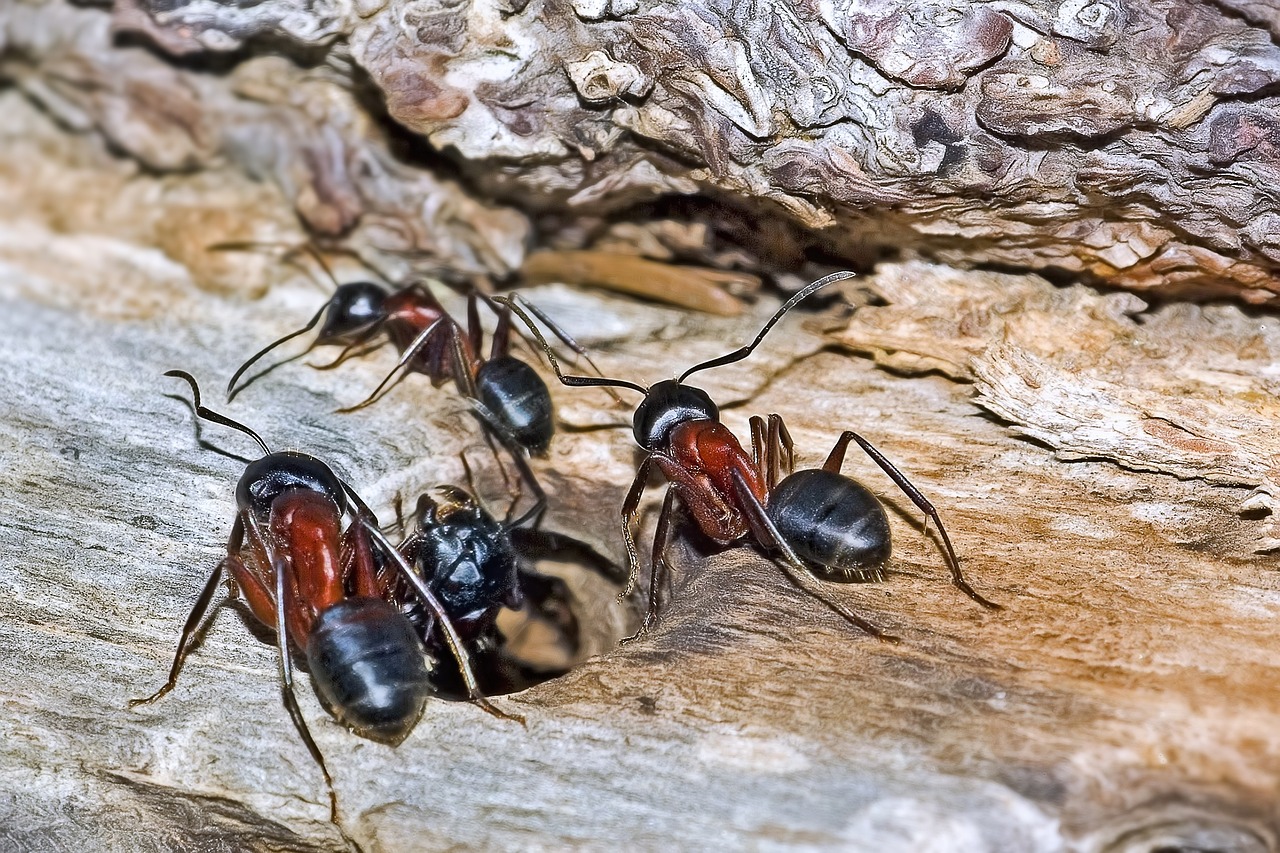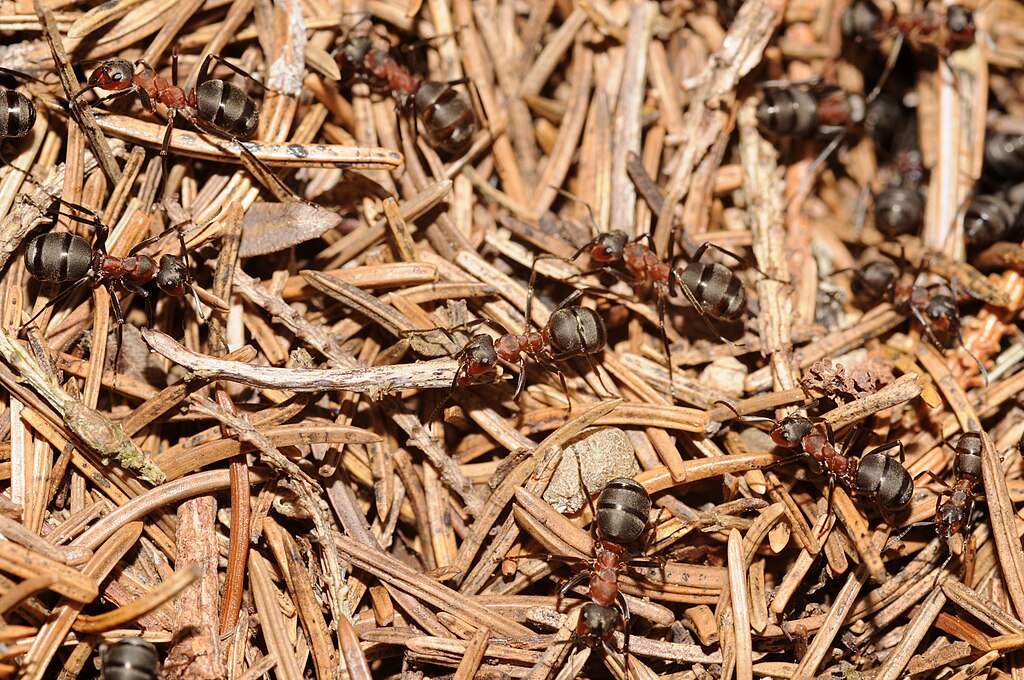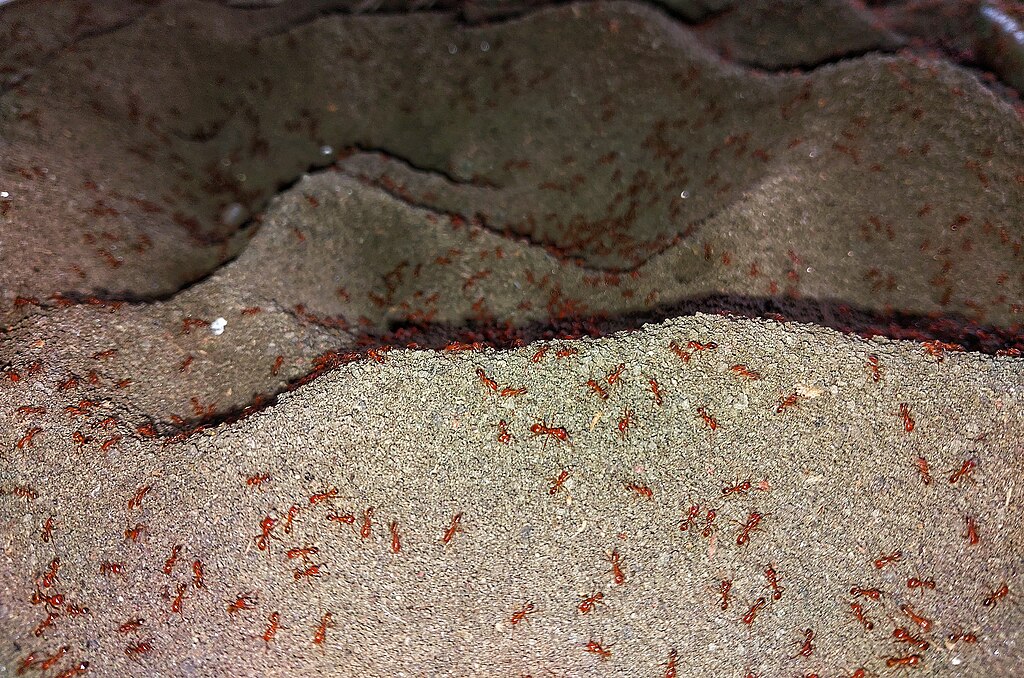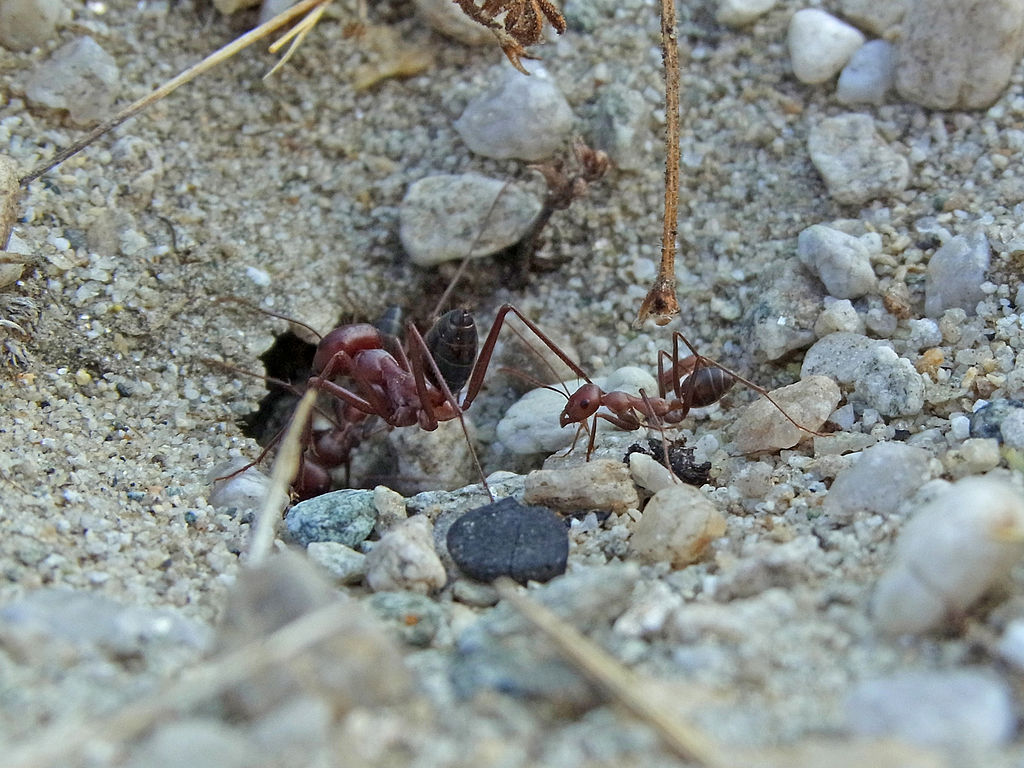Picture this: you’re standing at the entrance of a massive corn maze, smartphone in hand, frantically trying to use GPS to find your way out. Meanwhile, a tiny creature no bigger than your fingernail is navigating complex pathways with surgical precision, leaving you and your advanced technology in the dust. This isn’t science fiction – it’s the remarkable reality of how certain ant species have evolved maze-solving abilities that would make even the most sophisticated algorithms jealous.
The Genius of Desert Ants

Desert ants, particularly the Cataglyphis species, have captured the attention of scientists worldwide for their extraordinary navigational prowess. These remarkable insects can venture thousands of meters from their nest in the scorching Sahara Desert, zigzagging through complex terrain while foraging for food. What makes this feat even more incredible is that they accomplish this without leaving scent trails like many other ant species. The secret lies in their ability to perform what scientists call “path integration” – a sophisticated mental mapping system that tracks their position relative to home. Think of it as having a built-in GPS that never loses signal, even in the most challenging environments where landmarks are scarce and conditions are constantly changing.
The Science Behind Ant Navigation
Recent research has revealed that desert ants use a combination of visual landmarks, polarized light patterns, and step counting to navigate their world. Their compound eyes can detect the polarization of sunlight, which remains consistent even on cloudy days, giving them a reliable compass that works in conditions where human technology might fail. But here’s where it gets truly fascinating: these ants can also count their steps. Scientists have conducted experiments where they’ve shortened or lengthened ant legs with tiny stilts, and the results show that the ants’ navigation becomes proportionally affected. This suggests they’re using a form of biological odometry – essentially counting their footsteps to measure distance traveled.
Outperforming Computer Algorithms
When researchers began comparing ant navigation to computer maze-solving algorithms, the results were startling. Traditional computer programs often rely on methods like wall-following or random exploration, which can be inefficient and time-consuming. Ants, however, demonstrate what scientists call “optimal foraging behavior” – they find the most efficient routes while using minimal energy. The key difference lies in how ants process information in real-time. While computers might calculate every possible path before choosing the best one, ants make dynamic decisions based on immediate sensory input. This allows them to adapt quickly to changing conditions and find solutions that rigid algorithms might miss.
The Amazing Memory Palace of Ants
Perhaps the most mind-blowing aspect of ant navigation is their ability to create and maintain detailed mental maps. These tiny creatures, with brains containing only about 250,000 neurons compared to our 86 billion, can remember complex routes with pinpoint accuracy. They’re essentially building what memory champions call a “memory palace” – a detailed mental representation of their environment. Studies have shown that ants can remember multiple routes to the same destination, switching between them based on current conditions. If their preferred path becomes blocked, they can instantly recall alternative routes, demonstrating a level of cognitive flexibility that rivals much more complex animals.
Learning from Traffic Jams
One of the most surprising discoveries about ant navigation comes from studying how they handle congestion. When multiple ants encounter narrow passages or obstacles, they don’t simply pile up like cars in a traffic jam. Instead, they demonstrate remarkable collective intelligence, with some ants automatically choosing alternative routes to maintain overall traffic flow. This behavior has actually inspired new traffic management systems in major cities. Urban planners are now studying ant colonies to develop more efficient routing algorithms for everything from vehicle traffic to data networks. The ants’ ability to self-organize and optimize flow without central control offers valuable lessons for human infrastructure design.
The Role of Pheromones in Complex Navigation

While desert ants are famous for not using scent trails, many other ant species combine pheromone communication with sophisticated navigation skills. These chemical signals create a dynamic information network that helps the colony collectively solve complex spatial problems. When an ant discovers a new food source, it can lay down a pheromone trail that gradually strengthens as more ants use it. What’s remarkable is how this system automatically optimizes over time. Less efficient routes see their pheromone trails fade, while the most successful paths become reinforced. This creates a form of collective problem-solving that can find optimal solutions to maze-like environments more effectively than individual navigation alone.
Landmark Recognition and Visual Processing

The visual processing capabilities of ants are nothing short of extraordinary. Despite having relatively simple eyes compared to mammals, ants can recognize and remember visual landmarks with remarkable precision. They can distinguish between different tree shapes, rock formations, and even artificial markers placed by researchers. What makes this even more impressive is their ability to recognize landmarks from different angles and distances. An ant approaching its nest from an unusual direction can still identify key visual cues and adjust its path accordingly. This level of visual processing requires sophisticated neural networks that scientists are still working to fully understand.
Temperature Navigation and Thermal Mapping

Some ant species have developed the ability to navigate using temperature gradients, adding another layer to their sensory toolkit. In environments where visual cues are limited, ants can detect subtle temperature differences that help them maintain their orientation. This thermal navigation system works particularly well in underground tunnels or dense vegetation where other navigation methods might be less effective. Research has shown that certain desert ants can even use the heat signature of their own nest to guide them home. As the colony generates warmth through metabolic activity, it creates a thermal beacon that ants can detect from surprising distances. This biological heat-seeking ability provides yet another backup navigation system.
Social Learning and Route Optimization

Ants don’t just navigate individually – they learn from each other in ways that enhance the entire colony’s efficiency. Young ants often follow experienced foragers on their first trips, learning optimal routes through observation and practice. This social learning creates a knowledge base that gets passed down through generations of workers. The collective intelligence that emerges from this process is remarkable. Over time, ant colonies develop increasingly efficient route networks that connect food sources, water, and shelter. These networks often resemble the optimal solutions that computer algorithms might eventually calculate, but the ants achieve them through natural selection and social learning.
Adapting to Changing Environments
One area where ants consistently outperform static computer algorithms is in their ability to adapt to environmental changes. When researchers alter the landscape around ant colonies – moving landmarks, creating new obstacles, or changing terrain – the ants quickly adjust their navigation strategies. This flexibility allows them to maintain their foraging efficiency even as their world transforms around them. This adaptability comes from their ability to continuously update their mental maps based on new information. Unlike computer programs that might need to be completely reprogrammed when conditions change, ants seamlessly integrate new data into their existing navigation framework. This makes them incredibly resilient in dynamic environments.
The Physics of Ant Movement
The physical mechanics of how ants move through space also contributes to their maze-solving abilities. Their low center of gravity, six-legged locomotion, and ability to climb walls and ceilings gives them three-dimensional navigation options that ground-based systems can’t match. This physical versatility allows them to take shortcuts and explore spaces that would be impossible for larger animals or wheeled robots. Recent studies have shown that ants can even use their antennae to “feel” their way through tight spaces, adding a tactile dimension to their navigation toolkit. This multi-sensory approach to movement helps them navigate complex three-dimensional environments with remarkable efficiency.
Collective Problem-Solving in Action

When faced with particularly challenging navigation problems, ants demonstrate collective intelligence that surpasses individual capabilities. Multiple ants working together can solve mazes that would be impossible for a single ant to navigate. They share information through various communication channels, creating a distributed problem-solving network. This collective approach has inspired new approaches to artificial intelligence and robotics. Researchers are developing swarm robotics systems based on ant behavior, where multiple simple robots work together to solve complex navigation challenges. The potential applications range from search and rescue operations to space exploration.
Applications in Modern Technology
The navigation strategies of ants are revolutionizing multiple fields of technology. GPS systems are being enhanced with ant-inspired algorithms that can maintain accuracy even when satellite signals are weak or blocked. Autonomous vehicles are incorporating ant-like route optimization to improve efficiency and reduce energy consumption. Even internet routing protocols are being redesigned based on ant colony optimization principles. These bio-inspired algorithms can automatically find the most efficient paths for data transmission, reducing network congestion and improving overall performance. The simple navigation strategies of ants are proving to have profound implications for our connected world.
Future Research and Discoveries
Scientists continue to uncover new aspects of ant navigation that challenge our understanding of intelligence and problem-solving. Recent discoveries include evidence that some ants can use magnetic fields for navigation, similar to migratory birds. Other research suggests that ants might be capable of simple forms of planning and prediction, abilities once thought to be unique to higher animals. The more we learn about ant navigation, the more we realize how much these tiny creatures have to teach us about efficient problem-solving and environmental adaptation. Their millions of years of evolutionary refinement have produced navigation systems that are both elegant and incredibly effective.
Conclusion

As we face increasingly complex challenges in artificial intelligence, urban planning, and environmental management, the humble ant continues to provide inspiration and practical solutions. These remarkable insects prove that sometimes the most sophisticated answers come from the smallest packages, reminding us that intelligence takes many forms in the natural world. What seems impossible – that a creature with a brain smaller than a pinhead could outperform our most advanced computers – turns out to be a daily reality in the world of ants. Makes you wonder what other secrets the natural world is hiding, doesn’t it?

